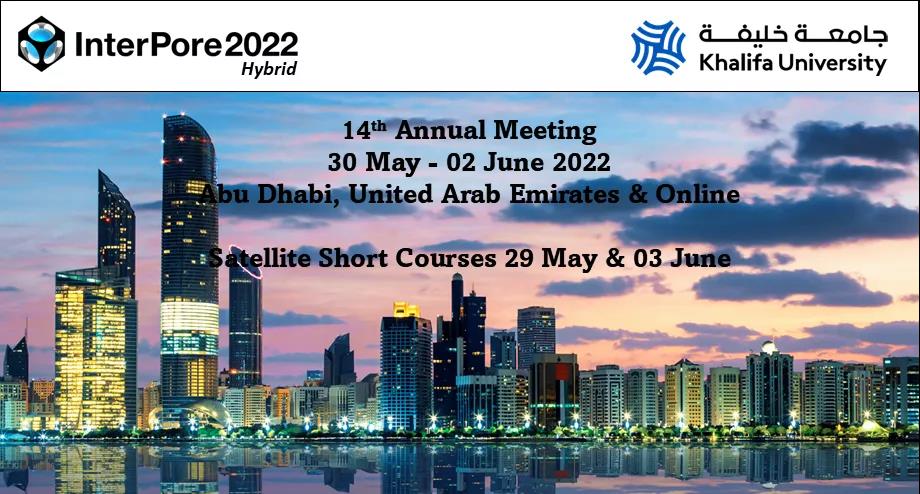Methane hydrate formation characteristics under different initial conditions and their impact on coal seam propertie
Abstract view|590|times PDF download|174|times
Abstract
Due to the unique structural characteristics of hydrate, it has a potential application value in coal and gas outburst prevention in coal mines. Given the complexity of subsurface environments, it is essential to investigate the hydrate formation kinetics under varied initial conditions, as well as the subsequent impacts of hydrate formation on coal seam properties. This research mainly focuses on the hydrate formation process in coal samples with different coalification degrees under different initial pressure and water saturation conditions by using the designed hydrate formation system. The results show that gas consumption and hydrate saturation can be greatly enhanced by increasing the initial water saturation and pressure, which is favorable to reduce the coal seam gas pressure and improve the coal seam peak strength. The calculation results suggest that hydrate formation at varying saturation reduces the gas pressure by 53.05% ∼91.33% and increases the peak strength of coal across the tested confining pressure by 36.45% ∼ 59%. Furthermore, this study found that hydrate formation kinetics are significantly enhanced in lignite compared to that in anthracite, which may be attributed to structural variations associated with the coalification degree. The underlying mechanism requires further research in the future. The data obtained in this study regarding the effect of hydrate formation under different initial conditions on coal seam properties demonstrate the feasibility of preventing gas disasters in coal via controlling the initial conditions.
Document Type: Original article
Cited as: Sun, C., Liu, S., Li, S., Wang, K., Dong, Z., Kong, S. Methane hydrate formation characteristics under different initial conditions and their impact on coal seam properties. Advances in Geo-Energy Research, 2025, 16(3): 229-243. https://doi.org/10.46690/ager.2025.06.04
Keywords
Full Text:
PDFReferences
Abas, N., Kalair, A., Khan, N. Review of fossil fuels and future energy technologies. Futures, 2015, 69: 31-49.
Ahamed, M. A. A., Perera, M. S. A., Matthai, S. K., et al. Coal composition and structural variation with rank and its influence on the coal-moisture interactions under coal seam temperature conditions–A review article. Journal of Petroleum Science and Engineering, 2019, 180: 901-917.
Aman, Z. M., Koh, C. A. Interfacial phenomena in gas hydrate systems. Chemical Society Reviews, 2016, 45(6): 1678-1690.
Bustin, A. M. M., Bustin, R. M., Moudrakovskim, I. L., et al. Formation of methane clathrate hydrates in coal moisture: Implications for coalbed methane resources and reservoir pressures. Energy & Fuels, 2016, 30(1): 88-97.
Cai, J., Xia, Y., Lu, C., et al. Creeping microstructure and fractal permeability model of natural gas hydrate reservoir. Marine and Petroleum Geology, 2020, 115: 104282.
Chen, S., Zhang, C., Lu, X. Energy conversion from Fossil fuel to renewable energy, in Handbook of Air Quality and Climate Change, edited by Springer Nature Singapore, Singapore, pp. 1-44, 2023.
Gao, X., Yang, T., Yao, K., et al. Mechanical performance of methane hydrate-coal mixture. Energies, 2018, 11(6): 1562.
Ge, B., Zhong, D., Lu, Y. Influence of water saturation and particle size on methane hydrate formation and dissociation in a fixed bed of silica sand. Energy Procedia, 2019, 158: 5402-5407.
Guo, G., Li, M., Zhang, Y., et al. Why can water cages adsorb aqueous methane? A potential of mean force calculation on hydrate nucleation mechanisms. Physical Chemistry Chemical Physics, 2009, 11(44): 10427-10437.
Ke, W., Svartaas, T. M., Chen, D. A review of gas hydrate nucleation theories and growth models. Journal of Natural Gas Science and Engineering, 2019, 61: 169-196.
Khurana, M., Yin, Z., Linga, P. A review of clathrate hydrate nucleation. ACS Sustainable Chemistry & Engineering, 2017, 5(12): 11176-11203.
Kvamme, B. Thermodynamics and kinetic mechanisms for CH4/CO2 swapping in natural sediments. Energy & Fuels, 2022, 36(12): 6374-6396.
Li, G., Liu, D., Xie, Y., et al. Study on effect factors for CO2 hydrate rapid formation in a water-spraying apparatus. Energy & Fuels, 2010, 24(8): 4590-4597.
Liu, A., Liu, S., Liu, P. Water sorption on coal: Effects of oxygen-containing function groups and pore structure. International Journal of Coal Science and Technology, 2021, 8(5): 983-1002.
Liu, X., Liu, S., Cheng, Y., et al. Decrease in hydrophilicity and moisture readsorption of lignite: Effects of surfactant structure. Fuel, 2020, 273: 117812.
Makogon, I. F. Hydrates of Natural Gas. Tulsa, Oklahoma, PennWell Books, 1981. Mech, D., Gupta, P., Sangwai, J. S. Kinetics of methane hydrate formation in an aqueous solution of thermodynamic promoters (THF and TBAB) with and without kinetic promoter (SDS). Journal of Natural Gas Science and Engineering, 2016, 35: 1519-1534.
Medhekar, N. V., Ramasubramaniam, A., Ruoff, R. S., et al. Hydrogen bond networks in graphene oxide composite paper: structure and mechanical properties. ACS Nano, 2010, 4(4): 2300-2306.
Meng, Y., Li, Z., Lai, F. Experimental study on porosity and permeability of anthracite coal under different stresses. Journal of Petroleum Science and Engineering, 2015, 133: 810-817.
Nguyen, N. N., Galib, M., Nguyen, A. V. Critical review on gas hydrate formation at solid surfaces and in confined spaces-why and how does interfacial regime matter? Energy & Fuels, 2020, 34(6): 6751-6760.
Ren, Z., Wang, D., Qin, Z., et al. Effects of pore size, water content, and oxygen-containing functional groups on oxygen adsorption in bituminous coal. Scientific Reports, 2023, 13(1): 10373.
Ribeiro Jr, C. P., Lage, P. L. C. Modelling of hydrate formation kinetics: State-of-the-art and future directions. Chemical Engineering Science, 2008, 63(8): 2007-2034.
Sayani, J. K. S., Lal, B., Pedapati, S. R. Comprehensive review on various gas hydrate modelling techniques: Prospects and challenges. Archives of Computational Methods in Engineering, 2021, 29: 2171-2207.
Smirnov, V. G., Manakov, A. Y., Ukraintseva, E. A., et al. Formation and decomposition of methane hydrate in coal. Fuel, 2016, 166: 188-195. Smith, J. M., Van Ness, H. C., Abbott, M. M., et al. Introduction to Chemical Engineering Thermodynamics. McGraw-Hill Singapore, 1949.
Song, Y., Zhu, Y., Liu, W., et al. Experimental research on the mechanical properties of methane hydrate-bearing sediments during hydrate dissociation. Marine and Petroleum Geology, 2014, 51: 70-78.
Sosso, G. C., Chen, J., Cox, S. J., et al. Crystal nucleation in liquids: Open questions and future challenges in molecular dynamics simulations. Chemical Reviews, 2016, 116(12): 7078-7116.
Stern, L. A., Kirby, S. H., Durham, W. B. Peculiarities of methane clathrate hydrate formation and solid-state deformation, including possible superheating of water ice. Science, 1996, 273(5283): 1843-1848.
Uchida, T., Hirano, T., Ebinuma, T., et al. Raman spectro-scopic determination of hydration number of methane hydrates. AIChE Journal, 1999, 45(12): 2641-2645.
Wang, F., Yao, Y., Wen, Z., et al. Effect of water occurrences on methane adsorption capacity of coal: A comparison between bituminous coal and anthracite coal. Fuel, 2020, 266: 117102.
Wang, Z., Liu, M., Guo, H. A strategic path for the goal of clean and low-carbon energy in China. Natural Gas Industry B, 2016, 3(4): 305-311.
Warrier, P., Khan, M. N., Srivastava, V., et al. Overview: Nucleation of clathrate hydrates. The Journal of Chemical Physics, 2016, 145(21): 211705.
Wu, Q., Li, C., Jiang, C. Discussion on the control factors of forming gas hydrate. Journal of China Coal Society, 2005, 3: 283-287. (in Chinese)
Wu, Q., Zhang, B. Progress in the mechanical effects of gas solidification by hydrate in coal. Journal of China Coal Society, 2024, 49(2): 720-738. (in Chinese)
Xia, Y., Elsworth, D., Cai, J., et al. Pore-scale water-gas distribution and gas permeability of natural gas hydrate reservoirs in the South China Sea. Geoscience Frontiers, 2024, 15(4): 101816.
Xia, Y., Xu, Sai., Andersen, P., et al. Characterization and capillary pressure curve estimation of clayey-silt sediment in gas hydrate reservoirs of the South China Sea. Advances in Geo-Energy Research, 2023, 10(3): 200-207.
Xia, Y., Zhang, R., Cao, Y., et al. Role of molecular simulation in understanding the mechanism of low-rank coal flotation: A review. Fuel, 2020, 262: 116535.
Xie, K. Physical characteristics of coal, in Structure and Reactivity of Coal: A Survey of Selected Chinese Coals, edited by Springer Berlin Heidelberg, Berlin, Heidelberg, pp. 29-65, 2015.
Yu, F., Song, Y., Liu, W., et al. Analyses of stress strain behavior and constitutive model of artificial methane hydrate. Journal of Petroleum Science and Engineering, 2011, 77(2): 183-188.
Yu, Y., Zhang, X., Liu, J., et al. Natural gas hydrate resources and hydrate technologies: a review and analysis of the associated energy and global warming challenges. Energy & Environmental Science, 2021, 14(11): 5611-5668.
Zeng, S., Su, B., Zhang, M., et al. Analysis and forecast of China’s energy consumption structure. Energy Policy, 2021, 159: 112630.
Zhang B., Niu, N., Li, H., et al. Assessing the efforts of coal phaseout for carbon neutrality in China. Applied Energy, 2023, 352: 121924.
Zhang, G., Liu, B., Xu, L., et al. How porous surfaces influence the nucleation and growth of methane hydrates. Fuel, 2021, 291: 120142.
Zhang, X., Li, J., Wu, Q., et al. Effect of initial pressure on the formation of carbon dioxide hydrate in frozen quartz sand. Energy & Fuels, 2019, 33(11): 11346-11352.
Zhang, X., Xu, K., He, M., et al. A review on the rural household energy in China from 1990s-transition, regional heterogeneity, emissions, energy-saving, and policy. Frontiers in Energy Research, 2022, 10: 907803.
Zhou, F., Xia, T., Wang, X., et al. Recent developments in coal mine methane extraction and utilization in China: A review. Journal of Natural Gas Science and Engineering, 2016, 31: 437-458.
DOI: https://doi.org/10.46690/ager.2025.06.04
Refbacks
- There are currently no refbacks.
Copyright (c) 2025 The Author(s)

This work is licensed under a Creative Commons Attribution-NonCommercial-NoDerivatives 4.0 International License.


